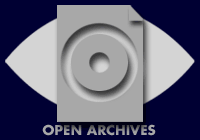Blends in Gravity Falls TV Series
Ermi Andriani(1*), Rio Rini Diah Moehkardi(2)
(1) English Department, Universitas Gadjah Mada
(2) English Department, Universitas Gadjah Mada
(*) Corresponding Author
Abstract
This research investigates the blending process used in Gravity Falls TV series seasons I and 2. It aims to classify blends based on the classification of blends proposed by Mattiello (2013) and interpret the meaning of blends. From the data source, there are fifty-four data considered as blends. The data are categorised in three perspectives, namely: morphotactic, morphonological and graphical, and morphosemantic. The result shows that morphotactically, the most frequently used pattern is partial blend particularly the blends consist of full word followed by splinter with 49 percent data. Then, morphonologically and graphically, non-overlapping type in which neither the graphs nor the sounds of source words are overlapped each other is commonly used in the series with 57 percent of overall data. Finally, morphosemantically, the most used structure with percentage of 63 percent is right headed blend in which the head is the second source word.
Keywords
Full Text:
PDFReferences
Algeo, J. (1977). Blends, a structural and systematic view. American Speech, 52(1/2), 47-64.
Danks, D. (2003). Separating blends: A formal investigation of the blending process in English and its relationship to associated word formation processes. The University of Liverpool, 2003.
Fromkin, V., Rodman, R. & Hyams, N. (2011). An introduction to language (9th ed.). New York: Wadsworth.
Gries, S. T. (2012). Quantitative corpus data on blend formation: Psycho- and cognitive-linguistic perspective. In V. Renner, F. Maniez & P. Arnaud (eds.), Cross-disciplinary perspectives on lexical blending (pp. 145-168). Berlin: Mouton de Gruyter.
Hirsch, A. (Executive director). (2012). Gravity falls Season 1. United States of America. Hirsch, A. (Executive director). (2016). Gravity falls Season 2. United States of America.
Hosseinzadeh, N. M. (2014). New blends in English language. International Journal of English Language and Linguistics Research, 2(2), 15-16.
Mattielo, E. (2013). Extra-grammatical morphology in English. Berlin: Walter de Gruyter.
Maulana, B. (2016). Blending strategies used in branding mobile applications: Prosodic morphology analysis. (Unpublished undergraduate thesis). Universitas Gadjah Mada, Yogyakarta, Indonesia.
Minotaur. (n.d.). Merriam-Webster online dictionary, Retrieved from Retrieved from https://www.merriam-webster.com/dictionary/Minotaur.
Moehkardi, R. R. D. (2016). Patterns and meanings of English words through word formation processes of acronyms, clipping, compound and blending found in Internet-based media. Humaniora, 28(3), 324-338.
O’Grady, W. D., Drobovolsky, M. & Aronoff, M. (1997). Contemporary linguistics: An introduction. Boston, MA: Bedford/St. Martin's.
Sangsthita. (2017). Blending in advertisements for events: A morphological study. (Unpublished undergraduate thesis). Universitas Gadjah Mada, Yogyakarta, Indonesia.
Setyowati, R. (2015). Prosodic morphological analysis on blends used as brand of snacks and beverages. (Unpublished undergraduate thesis). Universitas Gadjah Mada, Yogyakarta, Indonesia.
Yule, G. (2006). The Study of language (4th ed.). Cambridge: Cambridge University Press.
Article Metrics
Refbacks
- There are currently no refbacks.
Copyright (c) 2019 Ermi Andriani, Rio Rini Diah Moehkardi

This work is licensed under a Creative Commons Attribution-ShareAlike 4.0 International License.
Lexicon Office
| English Department Faculty of Cultural Sciences, Universitas Gadjah Mada Soegondo Building, 3rd Floor, Room 306 Yogyakarta, Indonesia 55281 Telephone: +62 274 513096 Email: lexicon.fib@ugm.ac.id ISSN: 2746-2668 (Online) |
 LEXICON is licensed under a Creative Commons Attribution-ShareAlike 4.0 International License. |
Lexicon is indexed in












